Where are the rest of your images?
I try to show images of every variety. Look at enough certificates and you will notice that about 25% of all varieties lack images. Thanks to contributors, that percentage has been dropping, but there is still a long way to go. Here are the kinds of questions I receive.
"Certificates often have descriptions, but no images. How do you know what they look like?"
Descriptions come from hundreds of sources. The majority of certificates with descriptions but no images originated from auction catalogs of the 1980s and 1990s. Some of those catalogs showed small images, but certainly not all. Even today, many auctions describe certificates without images. I have not necessarily seen images of every certificate listed.
"It seems you must have additional images that you don't show."
Yes. I have some kind of image for 88% of all varieties listed, but many images are too poor, distorted, or misshapen to display. Some are 30-year old black and white photocopies of auction pages. Although I beg collectors to contribute better images, I learned long ago that poor images seldom got replaced.
"I have some certificates that you don't show. Can I help?
Yes!!! See Images needed.
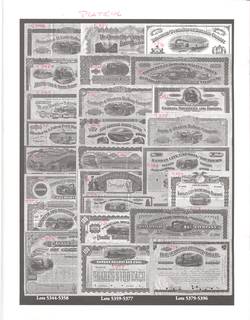
Catalogs from major auction houses probably represent the most important source for descriptions of genuinely rare certificates.
Those houses include R.M. Smythe, Scott Winslow & Associates, Freunde Historische Wertpapiere (FHW), Eric Boone, Mario Boone, Historische Wertpapierehaus (HWPH), and others. The earliest catalogs came from George LaBarre Galleries, Centennial Documents, and a host of other sources. The majority of older auction catalogs illustrated certificates with black and white halftone images. Smythe commonly illustrated twenty-five or more overlapped images of certificates on one page, Small details were impossible to see. (Shown at left is a typical page of illustrations from R. M. Smythe sale #254 published in 2005.)
|
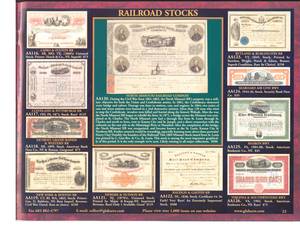
Many descriptions originated from fixed-price catalogs.
Here is an example from George H. LaBarre Galleries, Rarities Sale 10 . Secondary sources include catalogs from dealers, most of which are no longer in business. In the case of LaBarre's catalogs, images were superb for print publication. Since they were "screened" for halftone printing, however, they do not translate well to website displays.
|
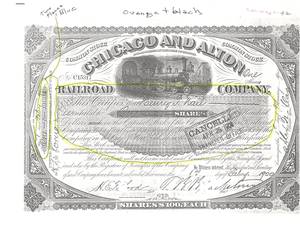
I have file boxes crammed with many thousand photocopies sent by contributors.
Most date from the 1990s and all but a handful are black and white photocopies. Unfortunately, collectors often made notes on images rendering their images unusable for this website. (This example shows an image of a certificate with both ends cut off by the copier and marked up by the contributor.)
|
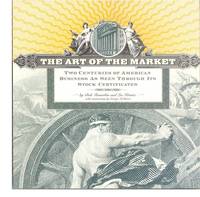
I can safely describe images that have appeared in books and magazines.
However, copyright laws prevent me from using their images for my website. Shown is the cover of The Art of the Market: Two centuries of American business as seen through its certificates, 1999, by Bob Tamarkin and Les Krantz.
|
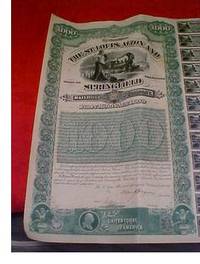
Vast numbers of certificate images appear on eBay and other sites.
Most images come from amateur sellers and are arguably acceptable for sales listings. The majority, however, are unusable for the purposes of this website because images are normally misshapen, distorted, oddly colored, unevenly lit, incomplete, or photographed against distracting backgrounds.
|